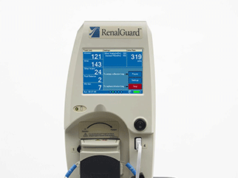
The first study to compare the use of transcatheter aortic valve implantation (TAVI) with conservative management in patients with chronic kidney disease (3–5) indicates that mortality is significantly higher with conservative management. This suggests that although patients with chronic kidney disease have worse outcomes after TAVI compared with patients without chronic kidney disease, they should still be considered for the procedure.
Tali Steinmetz (Department of Nephrology, Rabin Medical Center-Beilinson Hospital, Petach Tikva, Istrael) and others report in EuroIntervention that current evidence suggests that chronic kidney disease is associated with increased mortality after TAVI. They add that this has led to physicians being hesitant to refer such patients for TAVI, particularly considering TAVI is “associated with exposure to several risk factors for acute kidney injury”. However, the authors observe no study has compared the mortality of patients with chronic kidney disease undergoing TAVI with those receiving conservative treatment. “We sought to evaluate the effect of TAVI on survival and renal function in patients with stage 3–5 chronic kidney disease and severe symptomatic aortic stenosis compared to conservative management,” Steinmetz et al write.
Using data from their centre (Rabin Medical Center-Beilinson Hospital), the authors identified 198 patients with chronic kidney disease who underwent TAVI and compared them with 162 chronic kidney disease patients (with aortic stenosis) who received conservative management. The primary endpoint was overall mortality and the second endpoint included estimated glomerular filtration rate (eGFR).
After a mean follow-up of 1.9 years, mortality was significantly lower in the TAVI group: 32.7% vs. 49.5% for conservative management (p<0.001). Also, in a multivariate analysis cox analysis, conservative management was associated with a hazard ratio of 3.95 for mortality compared with TAVI. Steinmetz et al report that “a Kaplan-Meier survival curve showed significantly better survival rate for the TAVI group (p<0.001)” in a propensity matched analysis.
At three months, eGFR had increased slightly in patients who underwent TAVI and decreased in the conservative group. By one year, it had further decreased in the conservative group but remained stable in the TAVI group. The authors note that the interaction between eGFR change over time and treatment was “highly significantly” (p=0.01).
According to Steinmetz et al, on the basis of the results of this study, physicians should try to avoid making comparisons between TAVI patients with chronic kidney disease and those without chronic kidney disease. “When evaluating the risk/benefit of TAVI in the presence of chronic kidney disease, one needs to compare the outcome of patients with chronic kidney disease and aortic stenosis post TAVI with those treated conservatively and not to TAVI patients with no chronic kidney disease,” they comment.
The authors conclude: “These results should encourage both cardiologists and nephrologists to refrain from a priori excluding chronic kidney disease patients from undergoing thorough assessment for TAVI eligibility.” They add further studies are needed to identify characteristics of chronic kidney disease that are associated with survival benefit following TAVI.













